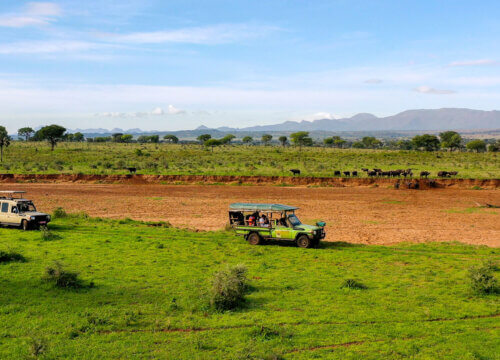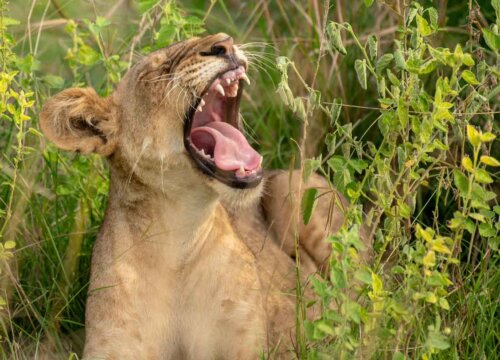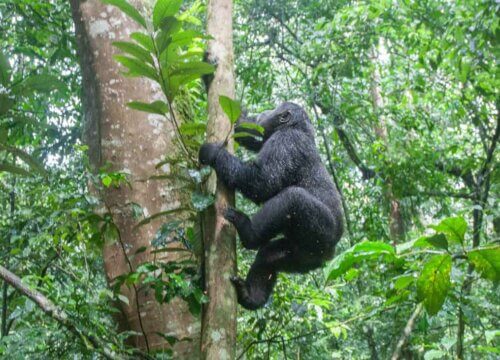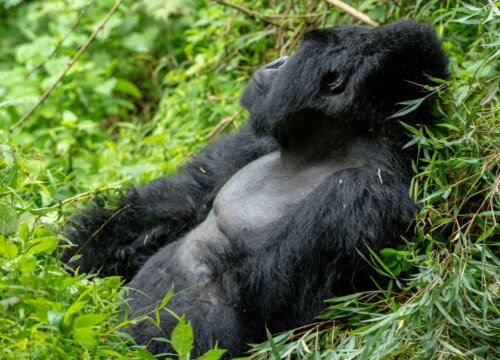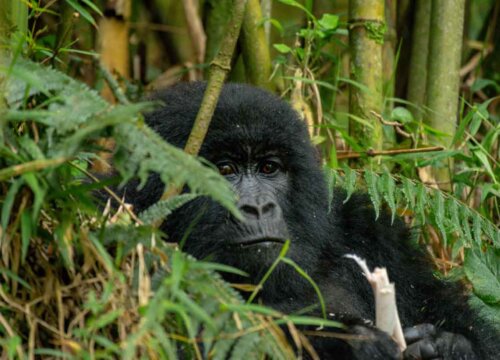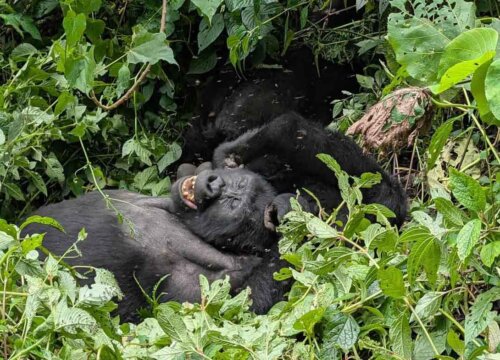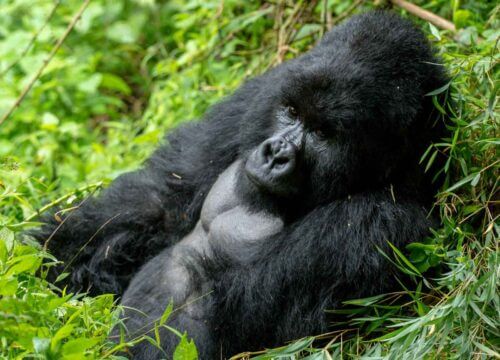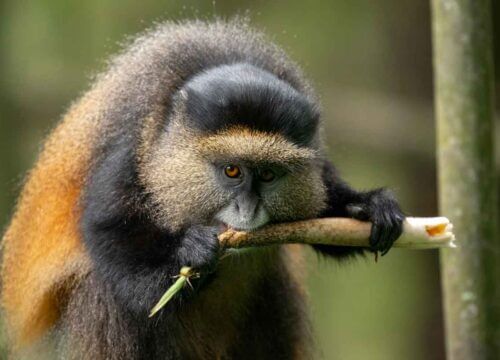Life of a gorilla rangers in Uganda
Life of a gorilla ranger in Uganda
Gorilla rangers play a crucial role in protecting the majestic mountain gorillas that call Uganda’s Bwindi Impenetrable National Park and Mgahinga Gorilla National Park home. Their work is as challenging as it is rewarding and every day brings new experiences.
A typical day for a gorilla ranger begins early often before sunrise. After breakfast, they gather their gear that is boots, raincoats, GPS devices and notebooks and set out into the dense forest. The terrain is rugged, with steep hills, muddy trails and thick vegetation. But for rangers, this is all part of the job. They trek for hours to monitor gorilla families, ensuring they are safe from threats like poachers, disease or habitat destruction.
A big part of their work involves habituation, the process of gently getting wild gorillas used to human presence. This allows researchers and tourists to observe them without causing stress. Rangers spend hours quietly observing gorilla families, noting their health, behavior and social interactions. But being a gorilla ranger is not just about trekking and observing wildlife; it is also about protecting these endangered animals from harm. Rangers patrol the forests to remove snares set by poachers and educate local communities about the importance of conservation. They work tirelessly to create harmony between humans and wildlife, often serving as a bridge between the two.
Despite the challenges like long hours, unpredictable weather and physical demands, rangers are passionate about their mission. They know their efforts are vital for the survival of mountain gorillas whose population has slowly increased thanks to conservation efforts. For many rangers, this work is more than a job; it is a calling.
The bond between rangers and gorillas is truly special. Over time, the gorillas come to recognize their human protectors, sometimes even showing signs of trust and curiosity. These moments of connection are what make all the hard work worthwhile.
Who is a gorilla ranger?
A gorilla ranger is a dedicated individual who works to protect and conserve gorillas in their natural habitats. These rangers are often found in regions like Central and East Africa, where mountain and lowland gorillas live. Their role is crucial in safeguarding these endangered animals from threats such as poaching, habitat destruction and illegal wildlife trade.
What are the roles of a gorilla ranger in Uganda?
Gorilla rangers in Uganda play a critical and complicated role in the conservation of mountain gorillas. These dedicated individuals are the heroes working tirelessly to protect gorillas and their natural habitats. Let us take a closer look at what their roles are and why their work is so important.
Protecting mountain gorillas. One of the primary responsibilities of a gorilla ranger is to ensure the safety of mountain gorillas. These rangers patrol national parks such as Bwindi Impenetrable National Park and Mgahinga Gorilla National Park to prevent illegal activities like poaching and deforestation. Poaching poses a significant threat to gorillas as they are sometimes targeted for bushmeat or captured for illegal wildlife trade. Rangers act as a critical line of defense, preventing poachers and protecting gorilla families from harm.
Monitoring gorilla health and behavior. Gorilla rangers spend a lot of time tracking and observing gorilla groups in their natural habitat. They monitor the health, behavior and population dynamics of these animals. By keeping detailed records, they help researchers and conservationists understand gorilla behavior and identify any signs of illness or distress. Early detection of diseases such as respiratory infections is crucial since these can spread quickly within gorilla groups and even between humans and gorillas due to their genetic similarities.
Guiding tourists. Tourism plays a vital role in funding gorilla conservation efforts and rangers are key players in ensuring that visitors have a safe and memorable experience. Gorilla trekking is a popular activity in Uganda attracting travelers from all over the world. Rangers guide tourists through dense forests to locate gorilla families, all while ensuring that the animals are not disturbed. They educate visitors about gorilla behavior, conservation challenges and the importance of protecting these animals.
Preventing human-wildlife conflict. Gorilla rangers also work to mitigate human-wildlife conflict which can arise when gorillas go to nearby communities in search of food. This can lead to crop destruction and tensions between local residents and wildlife. Rangers often intervene by guiding gorillas back into the forest and working with communities to implement measures that reduce such conflicts. For example, they may help build barriers or promote sustainable farming practices that discourage gorillas from straying into human settlements.
Community engagement and education. Building strong relationships with local communities is another essential aspect of a ranger’s job. Many conservation initiatives in Uganda involve working closely with people who live near gorilla habitats. Rangers help raise awareness about the importance of protecting mountain gorillas and their ecosystems. They also emphasize how conservation efforts benefit local communities such as through tourism revenue and job opportunities. By fostering collaboration, rangers help create a sense of shared responsibility for preserving Uganda’s natural heritage.
Facing daily challenges. Being a gorilla ranger is not an easy job. These individuals often work in rugged terrain enduring long hours in dense forests with unpredictable weather conditions. They face potential dangers from wild animals, poachers and even the challenging environments they navigate daily. Despite these hardships, their passion for wildlife conservation drives them to continue their work with unwavering commitment.
Where to do gorilla trekking in Uganda
If you are considering gorilla trekking in Uganda, the first and most popular spot is Bwindi Impenetrable National Park. Bwindi Impenetrable National Park is renowned for its lush, dense forests and is home to nearly half of the world’s mountain gorillas. Gorilla trekking here not only offers the chance to observe these gentle giants in their natural habitat but also immerses you in stunning landscapes and diverse wildlife.
Another excellent option is Mgahinga Gorilla National Park which is located in the Virunga Mountains. While smaller than Bwindi, Mgahinga Gorilla National Park offers a more intimate trekking experience. It is also the only park in Uganda where you can combine gorilla trekking with golden monkey tracking.
Both parks provide well-guided treks, but gorilla trekking permits are required, so plan ahead!
What is the best season for gorilla trekking in Uganda?
The best time for gorilla trekking in Uganda is during the dry seasons which usually occur from June to September and December to February. These months are ideal because the trails in the dense forests are less muddy and easier to navigate, making your trek more enjoyable and less physically challenging. Additionally, the weather is generally more predictable, with minimal rainfall which enhances your chances of spotting gorillas as they are more likely to stay in accessible areas. To book your gorilla trekking permit, contact Giant Holiday Safaris.
Explorer More Safaris
- 14-Days Uganda Safari Gorilla Chimpanzees and Wildlife
- 12 Days Gorillas and Chimpanzees Wildlife Safari
- 10 days best of uganda primates & wildlife safari
- 6 Days Gorillas and Chimpanzee Trekking Safari
- 3 Day Bwindi Gorilla Trekking Safari
- 4 Day Uganda Gorilla Trekking and Wildlife Safari
- 4 Days Gorilla Trekking and Adventure Safari
- 5 Days Uganda Gorillas and Chimpanzee Tracking Safari
- 4-Day Rwanda Gorilla Trekking and Golden Monkey Tracking Safari
- 5 Day Gorilla Habituation and Chimp Trekking
- 4-Day Uganda & Rwanda Gorilla Trekking Tour
- 3 Days Bwindi Gorilla Trekking Ugnada from Rwanda
- 10 Days Uganda Primates and Game Safari


